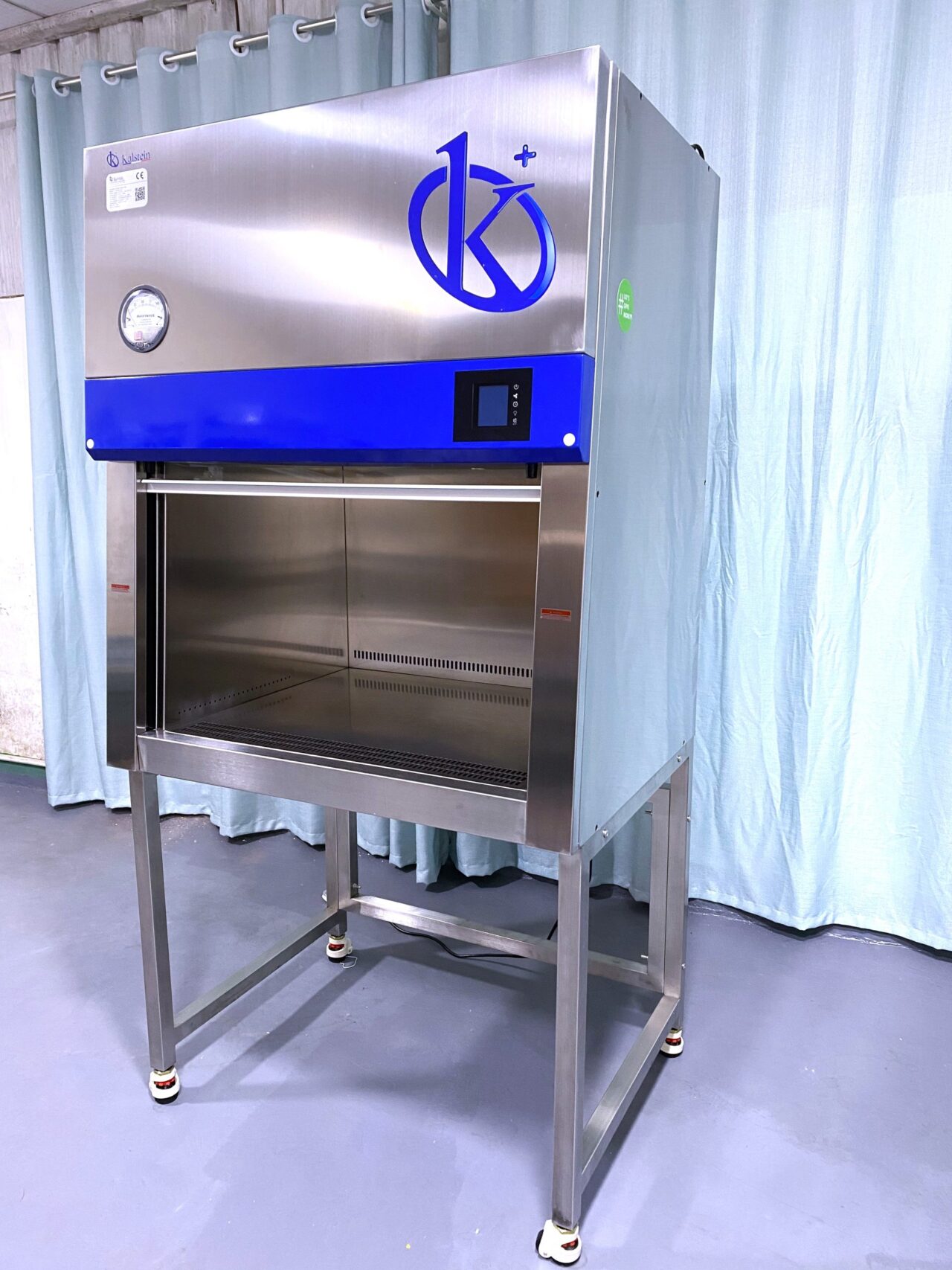A laminar flow hood is equipment used in laboratories in order to provide a pollution-free environment, as it offers a sterile and safe area within the laboratory, and any activity that is required safely can be carried out within it. The laminar flow hoods have a HEPA filter, which is responsible for filtering the air and maintaining the air flow.
While a biological safety cabinet (BSC) represents a primary containment barrier that allows safe working with biological agents. It is equipment that has a structure designed to prevent the exit of bioaerosols from the work area and therefore protect users and the environment from possible exposure to biological agents. There are three types: type I, type II, and type III. In the case of type I, it provides protection to the user and the environment but does not protect the product from possible contamination.
How do laminar flow hoods work?
In laminar flow hoods all air entering the work area is filtered through HEPA filters, producing a unidirectional flow because the air moves through the work area with a uniform speed along parallel lines achieving a sweep or removal of particles present in it. Air filtration is obtained by means of a built-in HEPA filter, which filters 99.97% of particles greater than or equal to 0.3 micrometers.
It is important to note that this type of equipment should not be used to work with dangerous products, for example, certain antibiotics and chemotherapy, or any type of pathogenic sample such as viruses, because during handling can generate aerosols that the airflow will lead to the operator. As it is designed to protect the product rather than the user unlike Type I security arrays.
How does a Type I Biosafety Array work?
Biosafety booths are equipment that provide a barrier to work safely with infectious agents. This equipment improves the general conditions under which a wide variety of activities are carried out in laboratories. The protection in these cabins is obtained through the combination of electromechanical/electronic elements such as the motor, fan, filter, ducts, lighting, and physical processes including laminar flow, pressure differences that drive the air through special large surface filters, strategically located, which have a minimum particle retention efficiency of 99.99%.
Type I biosafety cabins, which have a similar operating principle to a fume hood, are a negative-pressure cabin that is open from the front. Air from the room is introduced through the front opening and is extracted 100% of it. They are characterized by providing protection: to the user, to the environment and their main disadvantage is that they do not offer protection to the product.
What does Kalstein offer you?
Kalstein is a manufacturer of medical and laboratory equipment of the highest quality and the best technology at the best PRICES in the market, so you can make your PURCHASE confidently with us, knowing that you have the service and advice of a company specialized in the field and committed to provide you with safe, economical and effective options to perform your functions in the right way.
This time we present our Biosafety Cabinet of class I YR0098. This innovative equipment with cutting edge technology has the following features:
- The class I biosafety cabinet does not protect the product from contamination because unpurified room air constantly enters the work area.
- As a partial containment unit, the Class I biosafety booth is suitable for work with low to moderate risk agents. (Biosafety levels 1, 2 and 3) where there is a need for containment, but no product protection.
- Unlike the conventional extraction hood, the HEPA filter in the Class I biosafety booth protects the environment by filtering the air before it runs out.
- With negative pressure, staff protection is possible thanks to constant air movement in the work area.
- UV lamp for sterilization.
- Soft touch control panel, LCD display.
- Energy saving, high efficiency, low noise.
- With memory function in case of power outage.
- One piece of stainless steel 304 stable, easy to clean.
- Stable airflow system; provide firm protection to people and the environment.
For more information we invite you to take a look at: HERE

